Not All Icons Are Equal: 7 To View From Afar And 9 Worth Fighting The Crowds For
Ever stood at a world-famous landmark, feeling like you’re just part of a crowd rather than soaking in the moment? It’s a travel conundrum we all face: do you brave the masses for that perfect close-up, or step back and admire from a distance?
Some spots simply lose their charm when packed with tourists, turning your dream visit into a long line and photo-bombed selfies. Others, surprisingly, reveal hidden layers of beauty when you get up close—details that photos can’t capture and crowds can’t drown out.
Trust me, knowing when to push through and when to pause can save you time, money, and a whole lot of stress. Ready to find out which famous sites truly live up to the hype and which ones you might want to admire from afar?
1. The Mona Lisa at the Louvre

You’ll spend more time looking at the backs of heads than Leonardo’s masterpiece when visiting the Mona Lisa. The painting sits behind bulletproof glass, surrounded by barriers that keep you at least six feet away.
Hundreds of tourists crowd the small room daily, making it nearly impossible to appreciate the artwork’s subtle details. Most visitors snap a quick selfie and leave within minutes.
Instead, explore the Louvre’s less crowded wings where you can actually study incredible art without fighting for space. The museum houses thousands of masterpieces that receive far less attention but offer much more rewarding viewing experiences.
2. Times Square in New York City
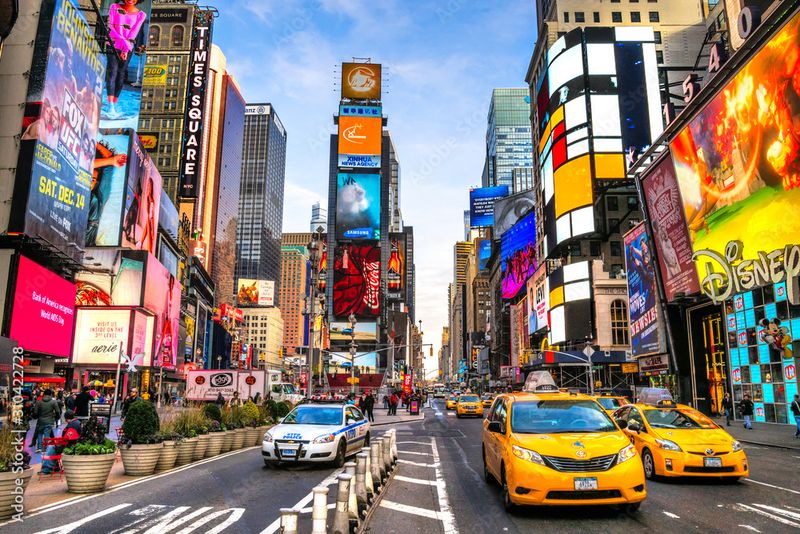
Times Square assaults your senses with flashing lights, honking cars, and pushy street performers in costumes. The area reeks of exhaust fumes and overpriced food trucks, while pickpockets work the dense crowds.
You can’t walk more than ten feet without someone trying to sell you something or hand you a flyer. The famous red steps are usually packed with tourists taking photos.
View this iconic location from nearby rooftop bars or restaurants instead. You’ll capture better photos of the neon spectacle without dealing with the chaos below, plus enjoy a drink while soaking in the urban energy from above.
3. Hollywood Walk of Fame

Walking along Hollywood Boulevard means stepping over dirty stars while dodging aggressive street performers and souvenir hawkers. The famous sidewalk stars are often covered in grime, gum, and worse.
Costume characters demand tips for photos, and the smell of nearby fast food mingles with less pleasant urban odors. Most stars belong to people you’ve never heard of anyway.
Drive by slowly or view from across the street to say you’ve seen it. The Chinese Theatre and nearby attractions offer better photo opportunities without the unpleasant ground-level experience of this overhyped tourist trap.
4. Stonehenge
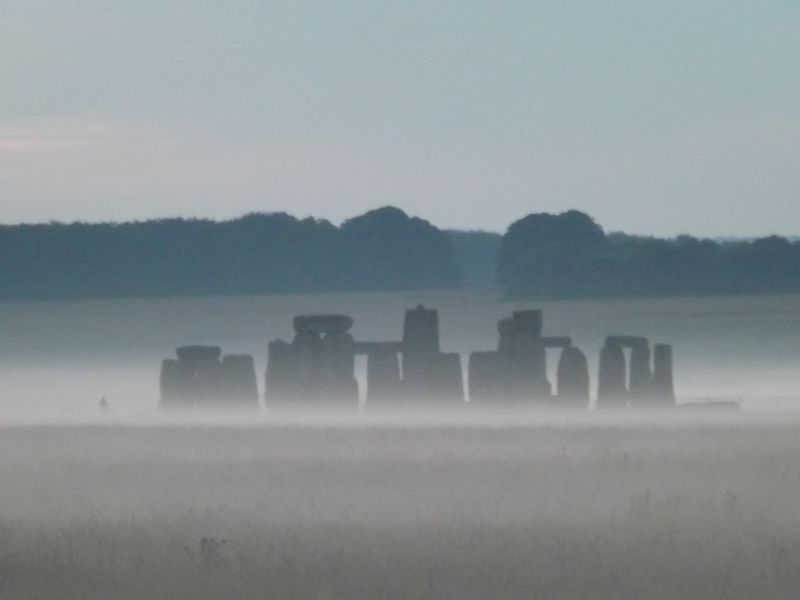
Modern safety regulations keep visitors behind ropes, placing you roughly 30 yards from the ancient stones. You can’t touch or walk among the monuments, making the experience feel distant and disconnected.
Audio guides provide interesting historical context, but the viewing area gets crowded during peak hours. The stones appear smaller than expected when seen from the required distance.
The mystery and power of Stonehenge come across better in photographs taken with telephoto lenses. Consider viewing from the nearby A303 road or visiting during less crowded early morning hours when the atmosphere feels more mystical and authentic.
5. Four Corners Monument

This underwhelming concrete slab in the middle of nowhere charges admission to stand where four states meet. The monument sits in a barren desert with little else to see or do nearby.
Long lines form as families wait their turn to pose for the obligatory photo with limbs in different states. The surrounding area offers only expensive Native American crafts and basic restrooms.
Save your money and time unless you’re already driving through the area. The novelty wears off quickly, and you’ll spend more time waiting in line than actually experiencing the monument. View photos online to satisfy your curiosity instead.
6. Mount Rushmore
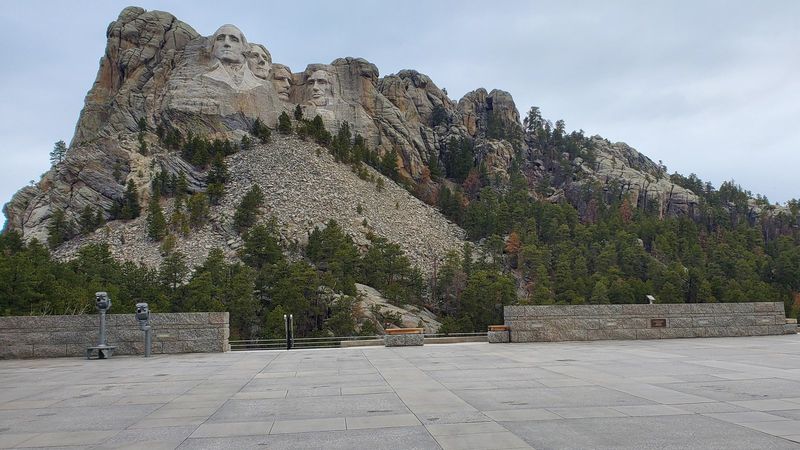
The carved presidential faces appear surprisingly small when viewed from the designated viewing areas. You’ll need binoculars or a camera zoom to see facial details clearly from the tourist platforms.
Parking fills up quickly during summer months, and the gift shop crowds can be overwhelming. The monument looks exactly like it does in every photograph you’ve ever seen.
Drive the scenic route to get better views from different angles without paying parking fees. The Iron Mountain Road offers stunning glimpses through tunnel frames, creating more memorable photo opportunities than the standard tourist viewpoint provides.
7. Leaning Tower of Pisa
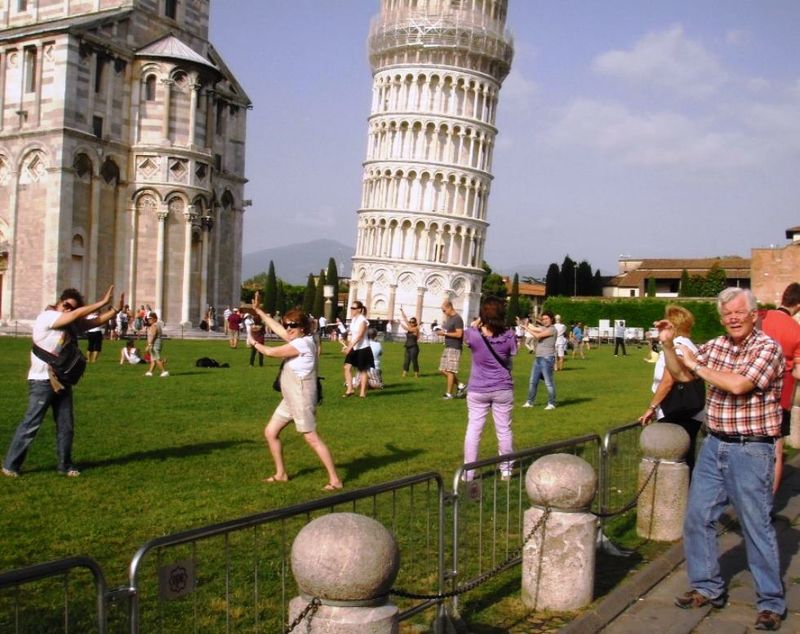
Everyone takes the same tired photo pretending to push over the tower, creating a circus atmosphere around this architectural marvel. The surrounding lawn fills with tourists contorting themselves for perspective shots.
Climbing the tower requires advance reservations and costs extra, but the lean makes the ascent disorienting and slightly nauseating. The views from the top aren’t particularly spectacular either.
Admire the tower’s unique architecture from the nearby cathedral steps or cafes. You’ll avoid the crowds and capture more artistic photos without participating in the cliché tourist poses that everyone else is taking.
8. The Great Wall of China
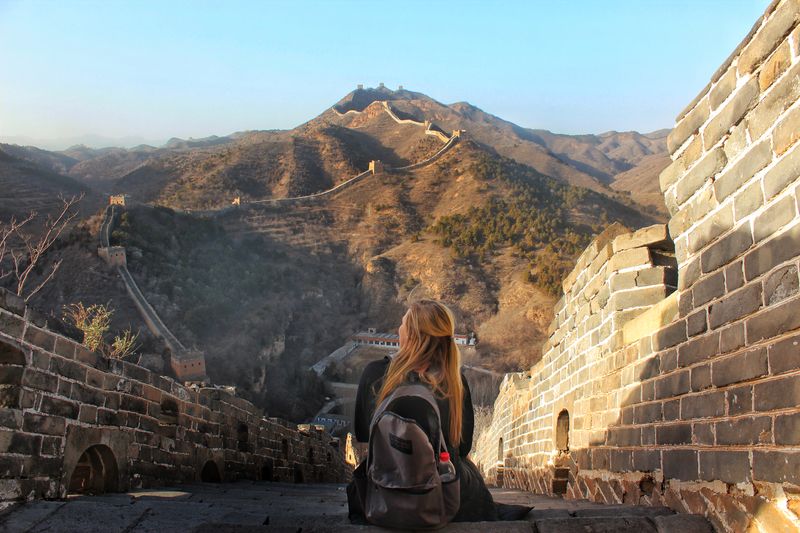
Walking on this ancient wonder gives you a tangible connection to thousands of years of history. The massive stone blocks beneath your feet were placed by hand centuries ago, creating an emotional experience.
Different sections offer varying crowd levels and difficulty. Mutianyu provides cable car access for easier visits, while Jinshanling offers more challenging hikes with fewer tourists.
The wall’s scale becomes apparent only when you’re actually walking along its spine. Photos can’t capture the engineering marvel of how it follows mountain ridges and valleys. Early morning visits reward you with misty mountain views and manageable crowds.
9. Machu Picchu
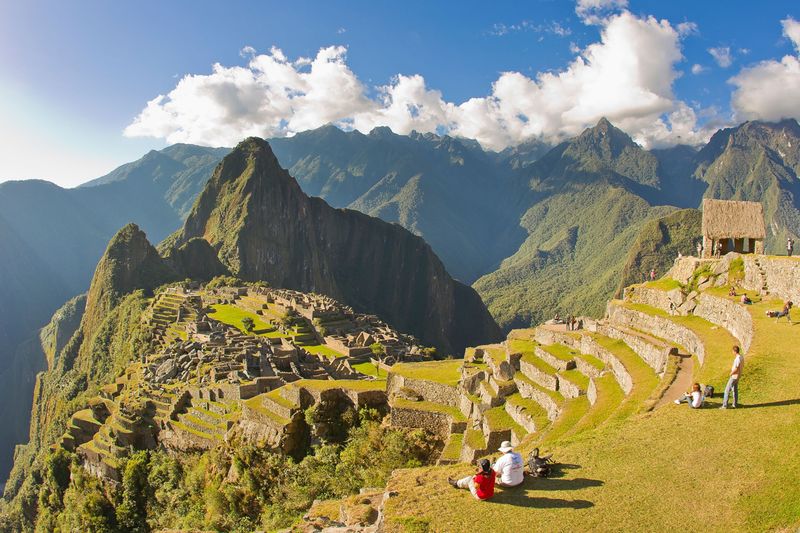
Standing among these perfectly preserved Incan ruins creates an almost spiritual experience that photos cannot convey. The precision of the stonework and the dramatic mountain setting combine to create genuine awe.
The journey itself adds to the adventure, whether you hike the Inca Trail or take the scenic train through the Sacred Valley. Each viewpoint reveals new architectural details and mountain vistas.
Book months in advance as daily visitor numbers are strictly limited. The crowds feel manageable compared to other world wonders, and the remote location filters out casual tourists, leaving mostly dedicated travelers who appreciate the site’s significance.
10. The Colosseum in Rome
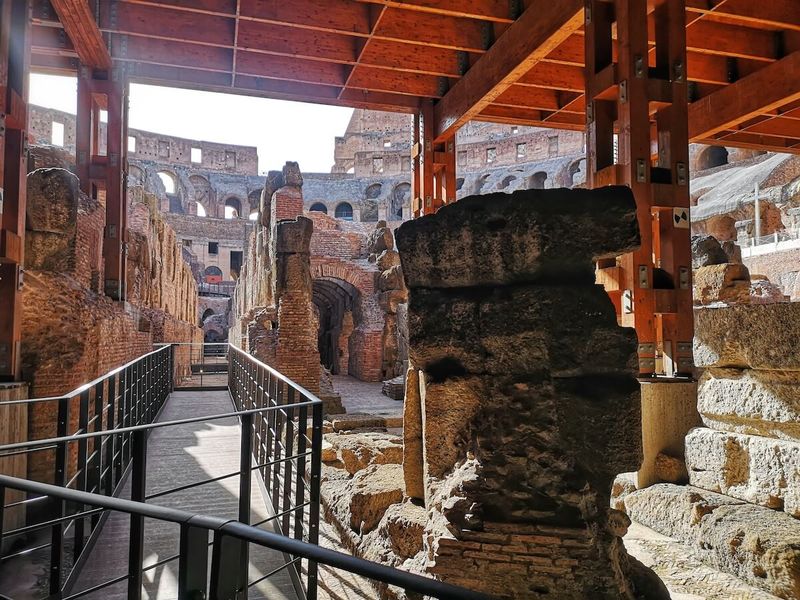
Walking through the underground chambers where gladiators waited brings Roman history to life in ways that external photos never could. The arena floor’s reconstruction helps you visualize ancient spectacles.
Different tour levels access restricted areas including the arena floor and upper tiers. The underground hypogeum reveals the complex machinery that created dramatic entrances for animals and fighters.
Skip-the-line tours are essential during peak season, but the investment pays off with expert guides who explain architectural details and historical context. The building’s massive scale and engineering sophistication become apparent only from inside the ancient walls.
11. Angkor Wat in Cambodia
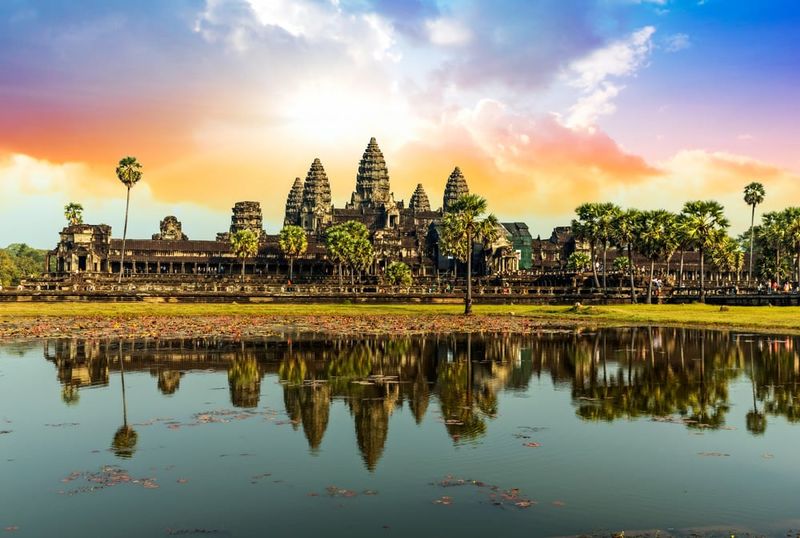
Sunrise over Angkor Wat creates magical lighting that transforms the ancient stones into golden masterpieces. The temple’s intricate bas-reliefs require close examination to appreciate their storytelling detail.
Exploring the vast complex takes full days, with each temple offering unique architectural features and historical significance. The jungle setting adds adventure as you discover hidden structures.
Hiring local guides enhances the experience tremendously, as they explain Hindu mythology depicted in the carvings and point out details you’d otherwise miss. The crowds thin out in afternoon sections, allowing for peaceful contemplation among these architectural marvels.
12. Petra in Jordan

The narrow Siq canyon builds anticipation as you walk toward the hidden city, then suddenly reveals the Treasury’s magnificent facade carved directly into rose-colored rock. This dramatic entrance creates unforgettable memories.
Beyond the famous Treasury, extensive ruins spread across the desert landscape, requiring full days to explore properly. Bedouin guides share stories passed down through generations about this ancient trading city.
The hiking challenges reward you with spectacular viewpoints and fewer crowds at remote temples. The Monastery hike offers breathtaking vistas, while the Royal Tombs showcase incredible architectural variety that makes every step worthwhile.
13. Taj Mahal in India

The Taj Mahal’s perfect proportions and intricate marble inlay work reveal new details as you move closer to this monument of love. Changing light throughout the day transforms the white marble from pink to golden hues.
The surrounding gardens and red sandstone buildings provide context for the main mausoleum’s significance. Inside, the actual tombs and acoustic properties create a reverent atmosphere that photos cannot capture.
Early morning and late afternoon visits offer the best lighting and smaller crowds. The monument’s emotional impact and architectural perfection justify dealing with the tourist masses and strict security procedures required for entry.
14. Sistine Chapel in Vatican City

Michelangelo’s ceiling masterpiece overwhelms your senses as you crane your neck to absorb the incredible detail and artistic genius. The Creation of Adam scene takes on new meaning when viewed in its original context.
The chapel’s role in papal elections adds historical significance beyond its artistic value. Standing where cardinals choose new popes creates a connection to centuries of Catholic tradition.
Photography is forbidden, forcing you to truly observe and remember rather than document. The guards’ constant shushing maintains a reverent atmosphere that enhances the spiritual and artistic experience of this Renaissance masterpiece.
15. Easter Island Statues
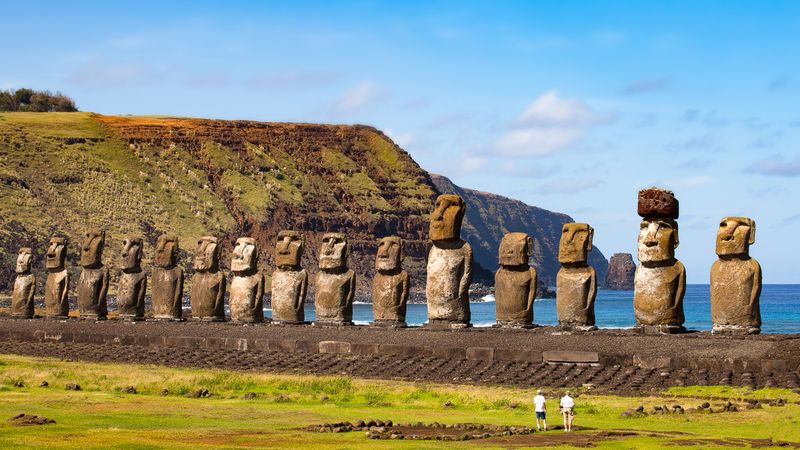
Standing beside these mysterious moai statues puts their massive scale into perspective – some tower over 30 feet tall and weigh up to 80 tons. Their enigmatic expressions seem to watch over the remote Pacific landscape.
The island’s isolation adds to the mystique, requiring a long flight from Chile to reach this archaeological wonder. Different sites showcase various stages of statue construction and transportation.
Local Rapa Nui guides share oral traditions about their ancestors’ incredible engineering achievements. The sunset ceremony at Ahu Tongariki, where 15 restored statues stand in formation, creates an almost otherworldly experience that justifies the journey to this remote destination.
16. Northern Lights in Iceland

Witnessing the aurora borealis dance across the Arctic sky creates a profound connection with nature that no photograph can replicate. The lights move and shift in real-time, creating an ever-changing celestial show.
Iceland’s dark winter nights and minimal light pollution provide optimal viewing conditions. The lights often appear suddenly and unpredictably, making each sighting feel like a personal gift from nature.
The cold Icelandic nights require proper clothing and patience, but successful aurora viewing becomes a life-changing experience. Many visitors describe feeling small yet connected to the universe while watching these natural light displays paint the polar sky in brilliant colors.
